Subscribe to our ▶️ YouTube channel 🔴 for the latest videos, updates, and tips.
Multiplication of Whole Numbers
Multiplication of whole numbers is the sort way to do repeated addition.
Multiply 2345081 and 4 by expansion method.
Solution:
(2000000 + 300000 + 40000 + 5000 + 80 + 1) × 4
= (2000000 × 4) + (300000 × 4) + (40000 × 4) + (5000 × 4) + (80 × 4) + (1 × 4)
= 8000000 + 1200000 + 160000 + 20000 + 320 + 4
= 9380324
The number by which any number is multiplied is known as the multiplicand. The result of the multiplication is known as the product
Let us recall multiplication of a number by two or three digit number. Now we will learn multiplication of large numbers.
Note: Multiplication can also be referred as product.
Multiplication of 4-Digit by 3-Digit Numbers:
1. Multiply 6285 by 289.
When we multiply 6285 by 289 we know, 6285 is the multiplicand and 289 is the multiplier. First with the multiplicand i.e. 6285 we will multiply by 9 and we get 56565. Then we will multiply 6285 by 8 and we get 50280 and atlast when we will multiply 6285 by 2 and we get 125700.
Therefore, after adding we get 1816365.
2. Multiply 1432 by 235.
Solution:
1 4 3 2
× 2 3 5
7 1 6 0 ← 1432 × 5 Step I: Multiplication with ones
4 2 9 6 0 ← 1432 × 30 Step I: Multiplication with tens
+ 2 8 6 4 0 0 ← 1432 × 200 Step I: Multiplication with hundreds.
3 3 6 5 2 0
Therefore, 1432 × 235 = 3,36,520.
3. Multiply 73162453 by 2435.
In multiply 73162453 by 2435 we know, 73162453 is the multiplicand and 2435 is the multiplier.
First with the multiplicand i.e. 73162453 we will multiply by 5 and we get 365812265. Then we will multiply 73162453 by 3 and we get 2194873590, again when we will multiply 73162453 by 4 and we get 29264981200 and atlast when we will multiply 73162453 by 2 and we get 146324906000.
Therefore, after adding we get 178150573055.
Examples on multiplication of large numbers:
We multiply large numbers as usual.
Let us consider some more examples.
4. Multiply 10201 by 132
Solution:
We first arrange the numbers one below the other in columns.
Hence 10201 × 132 = 1346532
5. Multiply 98357 by 2904
Solution:
We first arrange the numbers one below the other in columns.
Hence 98357 × 2904 = 285628728
Multiplication of 6-digit by 1-digit number (Indian Numbering System)
6. Multiply 2,56,883 by 8.
Solution:
2 5 6 8 8 3
× 8
2 0 5 5 0 6 4
Therefore, 2,56,883 × 8 = 20,55,064.
Multiplication of 6-digit by 1-digit number (International Numbering System)
7. Multiply 340,386 by 9.
Solution:
3 4 0 3 8 6
× 9
3 0 6 3 4 7 4
Therefore, 340,386 × 9 = 3,063,474.
Multiplication of 7-digit by 2-digit number (Indian Numbering System)
8. Multiply 41,32,431 by 11.
Solution:
4 1 3 2 4 3 1
× 1 1
4 5 4 5 6 7 4 1
Therefore, 41,32,431 × 11 = 4,54,56,741
Multiplication of 7-Digit by 1-Digit Number (International Numbering System)
9. Multiply 2,218,421 by 7.
Solution:
2 2 1 8 4 2 1
× 7
1 5 5 2 8 9 4 7
Therefore, 2,218,421 × 7 = 15,528,947.
Multiplication of 8-Digit by 2-Digit Number (Indian Numbering System)
10. Multiply 4,32,21,531 by 24.
Solution:
4 3 2 2 1 5 3 1
× 2 4
1 7 2 8 8 6 1 2 4
8 6 4 4 3 0 6 2
1 0 3 7 3 1 6 7 4 4
Therefore, 4,32,21,531 × 24 = 1,03,73,16,744.
Multiplication of 8-Digit by 2-Digit Number (International Numbering System)
11. Multiply 30,438,721 by 42.
Solution:
3 0 4 3 8 7 2 1
× 4 2
6 0 8 7 7 4 4 2
1 2 1 7 5 4 8 8 4
1 2 7 8 4 2 6 2 8 2
Therefore, 30,438,721 × 42 = 1,278,426,282.
Multiplication of 6-Digit by 3-Digit Number (Indian Numbering System)
12. Multiply 2,92,138 by 321.
Solution:
2 9 2 1 3 8
× 8 2 1
2 9 2 1 3 8
5 8 4 2 7 6
8 7 6 4 1 4
9 3 7 7 6 2 9 8
Therefore, 2,92,138 × 321 = 9,37,76,298.
Multiplication of 6-Digit by 3-Digit Number (International Numbering System)
13. Multiply 475,226 by 212.
Solution:
4 7 5 2 2 6
× 2 1 2
9 5 0 4 5 2
4 7 5 2 2 6
9 5 0 4 5 2
1 0 0 7 4 7 9 1 2
Therefore, 475,226 × 212 = 100,747,912.
Word Problems on Multiplication of Whole Numbers:
1. A company manufactures 5580 cartoons of chocolates in a month. A cartoon contains 1200 chocolates. How many chocolates will the company manufacture in 12 months?.
Solution:
Number of cartoons manufacture in a month = 5580
Number of chocolates a cartoon contains = 1200
So, chocolates manufacture in one month = 5580 × 1200
= 6696000 chocolates
Chocolates manufacture in twelve months = 6696000 × 12
= 8,03,52,000 chocolates
2. Nairitee was asked to multiply 34,75,421 by 39. By mistake she multiplied by 93. How much was her answer greater than the correct answer?
Solution:
If Nairitee were to multiply 1 by 93 instead of 39, the increase = 93 - 39 = 54.
Therefore, increase in answer when Nairitee has to multiply 34,75,421 by 54:
Hence, Nairitee's answer is 4,22,70,138 greater than the correct answer.
Worksheet on Multiplication of Whole Numbers:
Questions and Answers on Multiplication of Whole Numbers:
I. Multiply the given numbers by expansion method.
(i) 669023 × 7
(ii) 6652309 × 6
Answers:
(i) 4683161
(ii) 39913854
II. Multiply the given numbers by column method.
(i) 27613 × 26
(ii) 66924 × 35
(iii) 615028 × 43
(iv) 781145 × 57
(v) 748250 × 69
(vi) 8417129 × 81
Answers:
(i) 717938
(ii) 2342340
(iii) 26446204
(iv) 44525265
(v) 51629250
(vi) 681787449
III. Multiply the following:
(i) 39176 × 264
(ii) 86542 × 5406
(iii) 789331 × 318
(iv) 96203 × 6815
(v) 845017 × 497
(vi) 55159 × 2000
Answers:
(i) 10342464
(ii) 467846052
(iii) 251007258
(iv) 655623445
(v) 419973449
(vi) 110318000
- Addition Of Whole Numbers.
- Word Problems on Addition and Subtraction of Whole Numbers
- Subtraction Of Whole Numbers.
- Multiplication Of Whole Numbers.
- Properties Of Multiplication.
- Division Of Whole Numbers.
- Properties Of Division.
- Word Problems on Multiplication and Division of Whole Numbers
- Worksheet on Addition and Subtraction of Large Numbers
- Worksheet on Multiplication and Division of Large Numbers
- Worksheet on Operations On Whole Numbers
from Multiplication of Whole Numbers to HOME PAGE
Didn't find what you were looking for? Or want to know more information about Math Only Math. Use this Google Search to find what you need.
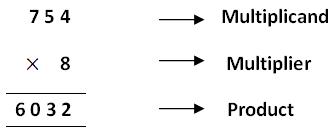
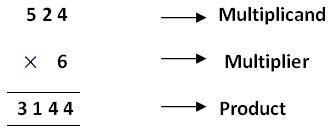

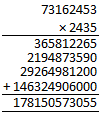
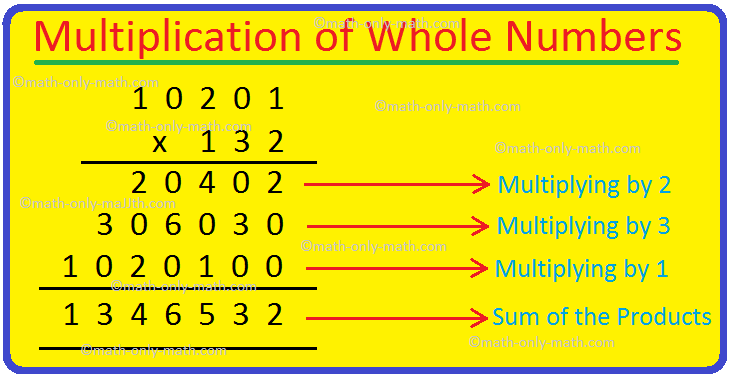
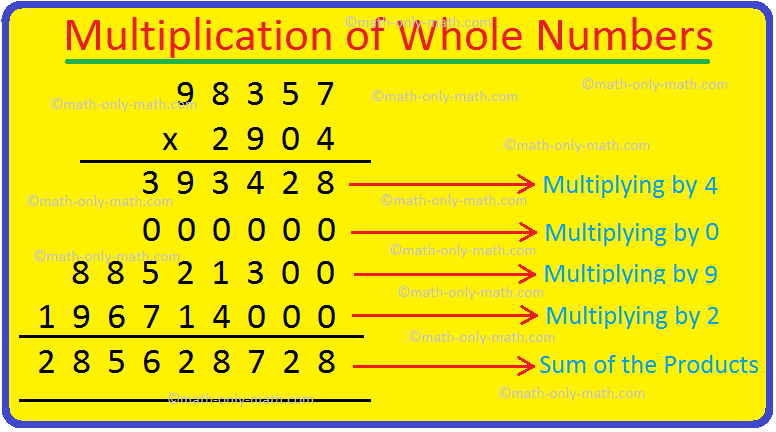
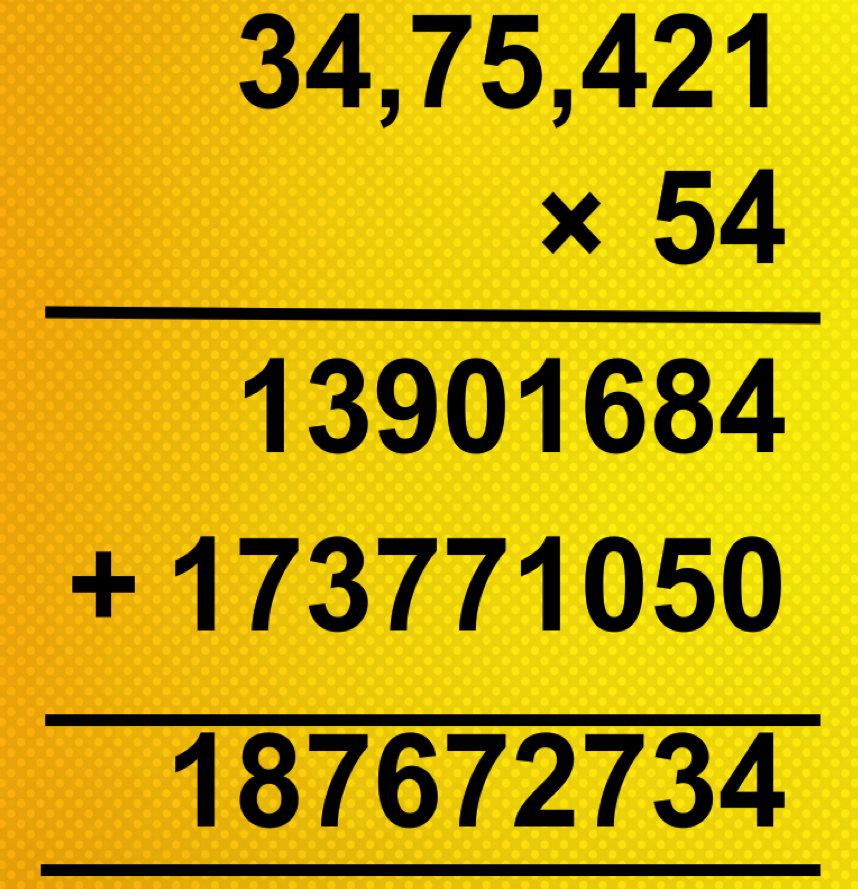


New! Comments
Have your say about what you just read! Leave me a comment in the box below. Ask a Question or Answer a Question.